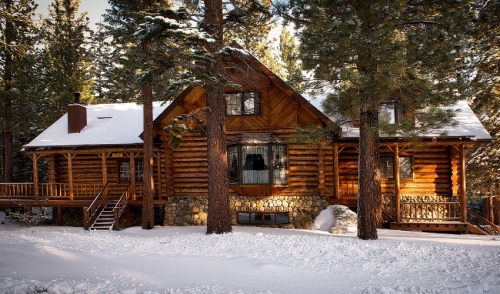
8 Ways to Winterize Your Home
Leaves are falling, the days are getting shorter and stores are already pushing their holiday merchandise – cold weather is on its way. Is your home prepared? The winter season can be tough on a house resulting in mid-season repairs and high energy bills. A little preemptive work now can help save you money and headaches once the season is in full swing.
Here are a few ways to get your home ready for winter:
Fireplaces
There’s nothing cozier than a fire in winter, but that beautiful warm fire might be secretly costing you money. The chimney is an escape tunnel for warm air. When the chimney is open, heat from your home (both from the fire and from your HVAC unit) will race out of your house through the chimney before you get any benefit. It might feel warm by the fire, but other rooms will be cold. According to U.S. Department of Energy, as much as 1,000 cubic feet of warmed air escapes up the chimney per minute. If you’re concerned about energy bills, it’s best to install an airtight tempered glass door to the front of your fireplace that will prevent your home’s heat from running up, up and away. And if you don’t use your fireplace, cap the chimney with an airtight seal. The chimney cap also prevents critters (birds, squirrels, even cats) from climbing in.
Attics/Insulation
The best way to fight back against the cold is with proper insulation. Don’t neglect your attic and crawlspaces. Proper insulation in these areas keeps warm air down in the living area, instead of allowing it to sneak up into the attic where it can melt snow and ice on the roof and cause ice dams. Now is the perfect time to check the insulation levels in your attic. If it’s low (can you see the floor joists?) add additional insulation such as CertainTeed’s InsulSafe®SP which can get into the hard to reach areas.
Pipes
“Piping hot” might not be a good thing. If water pipes are hot that means you’re losing heat. Safely touch your water pipes and see if they feel warm. If they do, use pipe insulation sleeves to wrap and blanket your pipes, trapping the heat inside where it belongs. These pre-cut sleeves are available at most home stores and are easy to install.
HVAC
Like a pro-athlete stretching before the big game, you need to prepare your heating system for the winter. Have an HVAC expert give your system an annual checkup, making sure the unit is ready for battle. Replace air filters, perform a safety check and ensure that all motors and blowers are running cleanly and efficiently. The best time to check and start your heating system is NOT the first day of a snow storm.
Roofs
Your roof is about to get a cold weather workout, so now is the time to make sure it’s winter-ready. Remember that repairing and replacing a roof in February isn’t as easy as fixing the problem in October. So take a few minutes to check your roof now. Use our quick roof inspection guide to walk through the process. Investing 30-minutes now is well worth, weeks of headaches later. It’s also a good idea to inspect your trees. Check for broken or precarious branches that may snap off and cause damage during a winter storm. Hire a professional to cut away limbs. Tree trimming is dangerous work, so if you do see potential problems, do not attempt to cut tree limbs yourself.
And after the leaves have fallen and before the snow appears, make sure your gutters and downspouts are clean and ready for any winter rain or slushy-mix. For most of us, cleaning a gutter isn’t fun, and quickly becomes less so the colder the weather gets.
Windows
Winter wants in your house in the worst way and it loves to sneak in through the windows. You can lose about 10 to 25 percent of your home’s heat through your windows. Storm windows and doors are the big guns in the fight against winter weather, but if you don’t have storm windows, you can still defend your home. First use caulk to seal up any holes and cracks on the outside. Then apply weatherstripping and use a window insulation kit (installed with a hairdryer) to block the cold from the inside.
Ceiling Fans
Most ceiling fans have a switch to change the direction of the fan. Hit that switch, sending the blades in a clockwise rotation during winter and let your ceiling fan recirculate the warm air hiding at the top of your room.
Exterior Faucets
If your exterior faucets are prone to freezing, now is the time to install an anti-frost faucet, called a frost-free sillcock. The valve in these faucets is located inside the wall of your home, instead of outside where it can freeze up and cause the pipes to burst.
Winter’s cold hand is about to hit your house hard but with a little work now, you can spend the season safe and sound in a home that’s comfortable and efficient. For more tips and advice on insulating your home visit our Complete Comfort site
